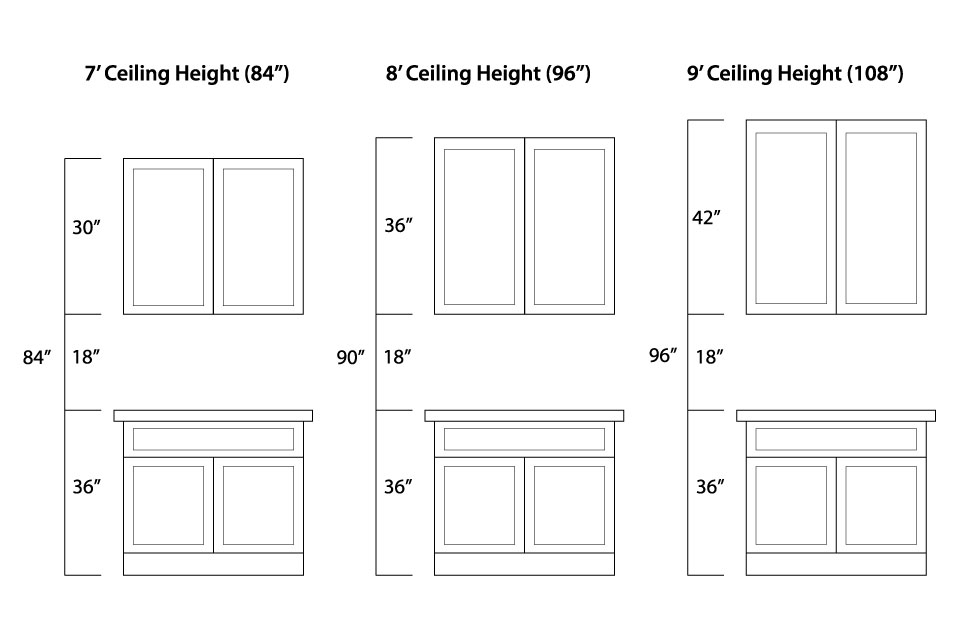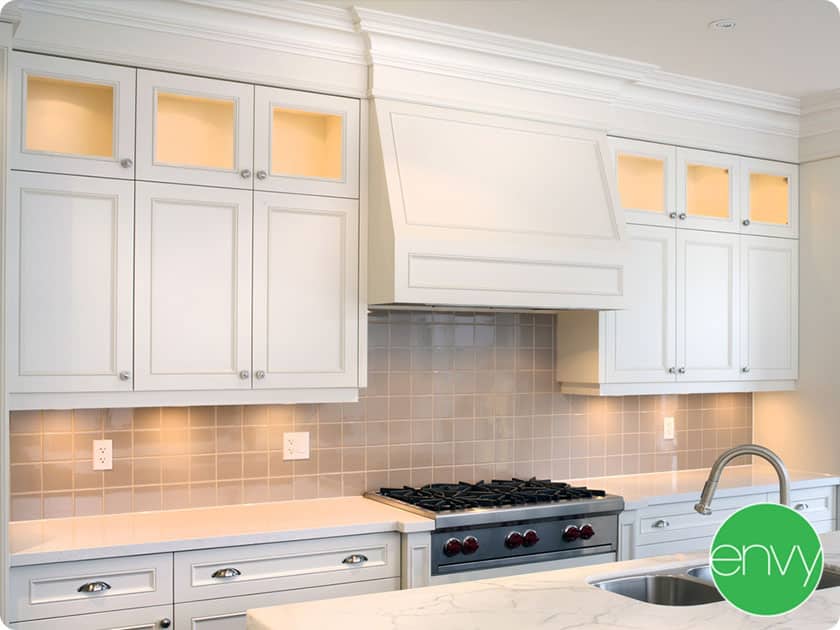Standard Distance for Kitchen Functionality

The standard distance between upper and lower cabinets in a kitchen is a crucial aspect of design, impacting everything from accessibility and ergonomics to workflow efficiency. Choosing the right distance ensures a comfortable and functional kitchen space, optimizing movement and ease of use for everyday tasks.
Impact of Distance on Accessibility, Ergonomics, and Workflow
The distance between upper and lower cabinets directly influences accessibility, ergonomics, and workflow in the kitchen. A well-designed distance promotes ease of movement, reduces strain on the body, and allows for efficient task completion.
- Accessibility: A comfortable distance ensures easy access to both upper and lower cabinets, minimizing the need for excessive reaching or bending. This is particularly important for individuals of varying heights or with mobility limitations.
- Ergonomics: The right distance promotes good posture and reduces strain on the back, neck, and shoulders. This is crucial for preventing fatigue and discomfort during prolonged kitchen tasks.
- Workflow: A well-planned distance facilitates efficient movement between cabinets and work surfaces, allowing for smooth transitions between tasks. This minimizes wasted time and effort, enhancing overall kitchen efficiency.
Examples of Varying Distances and their Impact on Kitchen Tasks
The impact of varying distances between upper and lower cabinets can be observed in various kitchen tasks.
- Cooking: A comfortable distance allows for easy access to ingredients stored in both upper and lower cabinets without unnecessary reaching or bending. This simplifies the cooking process, making it more enjoyable and efficient.
- Cleaning: A well-planned distance provides sufficient space for cleaning tasks, such as wiping down countertops or reaching into cabinets to clean spills. This ensures a clean and hygienic kitchen environment.
- Storage: The distance between cabinets allows for optimal storage solutions. A wider distance can accommodate larger items, while a narrower distance might be more suitable for smaller, frequently used items. This ensures that all items are easily accessible and stored efficiently.
Factors Influencing Standard Distance

The standard distance between upper and lower cabinets in a kitchen is not arbitrary. It’s a carefully considered measurement influenced by several factors, ensuring both functionality and comfort. This distance needs to be optimal for accessibility, ease of use, and safety.
Cabinet Depth
Cabinet depth significantly influences the standard distance. Deeper cabinets require more space to allow for comfortable access and movement. This is particularly important when opening doors and drawers, preventing them from bumping into the user.
For instance, a standard cabinet depth of 12 inches might require a 18-inch distance between the upper and lower cabinets, while a deeper cabinet of 18 inches might necessitate a 24-inch distance.
Countertop Height
The countertop height is a crucial factor, influencing the overall ergonomics of the kitchen. The recommended standard countertop height is typically around 36 inches. A lower countertop height might necessitate a greater distance between the upper and lower cabinets to avoid bumping your head.
For example, if the countertop is 34 inches high, the standard distance between the upper and lower cabinets might be reduced to 16 inches to maintain optimal comfort.
User Height
The height of the user is a crucial consideration in determining the standard distance between upper and lower cabinets. A taller user will need a greater distance between cabinets to ensure comfortable access and prevent bumping their head.
For instance, a taller user might prefer a distance of 20 inches between the upper and lower cabinets, while a shorter user might be comfortable with a 16-inch distance.
Accessibility Guidelines, Standard distance between upper and lower cabinets
Accessibility guidelines are crucial for ensuring that kitchens are usable for people of all abilities. These guidelines typically recommend a minimum distance of 18 inches between upper and lower cabinets to allow for wheelchair access and movement.
The Americans with Disabilities Act (ADA) guidelines for accessible kitchens recommend a minimum clearance of 30 inches wide and 48 inches deep for a wheelchair to maneuver. This translates to a standard distance of 18 inches between upper and lower cabinets.
Safety Considerations
Safety considerations are crucial when determining the standard distance between upper and lower cabinets. An insufficient distance can lead to head injuries, particularly when reaching for items in the upper cabinets.
For instance, a distance of less than 15 inches between the upper and lower cabinets could pose a safety risk for individuals, especially if they are tall or have limited mobility.
Standard Distance Guidelines and Recommendations: Standard Distance Between Upper And Lower Cabinets

The standard distance between upper and lower cabinets is crucial for a functional and aesthetically pleasing kitchen. It ensures comfortable movement, adequate workspace, and optimal storage accessibility.
Standard Distances for Upper and Lower Cabinets
This table Artikels the standard distances between upper and lower cabinets, encompassing minimum, recommended, and maximum values.
| Distance Type | Minimum (inches) | Recommended (inches) | Maximum (inches) |
|—|—|—|—|
| Countertop to bottom of upper cabinets | 18 | 21 | 24 |
| Upper cabinet depth | 12 | 15 | 18 |
| Lower cabinet depth | 24 | 27 | 30 |
The recommended distance between the countertop and the bottom of upper cabinets is 21 inches, allowing for ample headroom and ease of movement.
These guidelines are flexible and can be adjusted based on the specific layout and design of the kitchen, as well as individual preferences.
Applying Standard Distances in Different Kitchen Layouts
The standard distances are applied differently in various kitchen layouts and styles.
* Small Kitchens: In small kitchens, maximizing space is crucial. The minimum distances are often utilized to create a more open and spacious feel.
* Large Kitchens: Larger kitchens offer more flexibility. The recommended distances can be implemented to provide ample workspace and storage.
* Traditional Kitchens: Traditional kitchens often feature deeper cabinets and a greater distance between upper and lower cabinets, creating a classic and timeless aesthetic.
* Modern Kitchens: Modern kitchens often prioritize sleek lines and minimal clutter. The minimum distances are frequently used to achieve a streamlined and contemporary look.
The standard distance between upper and lower cabinets is crucial for a functional kitchen, just as the right distance between your villa and the pool is essential for a relaxing vacation. If you’re dreaming of a tropical getaway, consider a 2 bedroom pool villa krabi , where you can enjoy both.
And while you’re planning your dream kitchen, remember that the optimal distance between cabinets ensures ease of movement and ample storage space, just like a spacious villa allows for comfortable living.
The standard distance between upper and lower cabinets is crucial for comfortable use and accessibility. This distance can vary depending on the height of the user and the intended purpose of the cabinets. For example, when considering a home hardware pantry cabinet , you might choose a slightly larger gap to accommodate larger items and allow for easy access.
Ultimately, the ideal distance is one that maximizes functionality and comfort for your specific needs.
